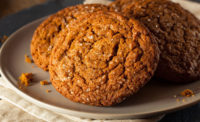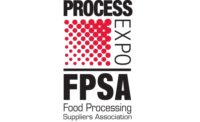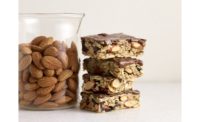The Austrian-based, family-owned Haas Food Equipment GmbH, via its three brands Franz Haas, Haas-Meincke and Haas-Mondomix, provides a wide range of equipment solutions for manufacturing cookies and confectionery products for snack and bakery companies around the world.
The Haas Group was founded by Franz Haas over a century ago and is now run by the fourth generation of the Haas family. Haas Group is composed of several individual companies: Franz Haas Wafer, Franz Haas CFT, Haas-Meincke and Haas-Monodomix.
In 1948, Haas introduced its first wafer machine, the HV6, which was operated manually. It quickly found success on the market. Today, Franz Haas Wafer equipment and technology is an industry-leader.
Franz Haas CFT specializes in equipment to manufacture convenience foods like ice cream cones, rolled wafers, waffles and pancakes. The company dates back to the 1950s when it launched its first ice cream cone oven, the TA. Equipment for the production of sugar cones and pancakes, among other applications, followed in the 1980s and beyond.
The business of Haas-Meincke likewise dates back to the 1950s when Meincke started producing equipment for molded and wire-cut cookies and cakes. More recently, in 2005, the company expanded into equipment for the production of crackers, pizza, breads products and Swiss roll cakes.
Haas-Mondomix has its roots in aeration technologies suited to confectionery and dairy products, offering equipment for aerating, depositing, forming and mixing creams and chocolate, as well as other various types of batter and dough.
Earlier this year, Franz Haas provided some perspective on today’s snack market, promoting four snack concepts that align with prevailing consumer trends:
- Scooper—a light, crispy, extruded snack scoop made of chickpea flour. Its original 3D shape adds interest and facilitates easy stacking. Use of chickpea flour and its low fat content (9 percent) align with better-for-you snacking trends. It’s also well suited to dipping and scooping.
- Vigor—this energy snack is enriched with beta-glucan to aid with better digestion. It was designed as a nutritional snack for consumers with active lifestyles.
- Nosh—corn flour serves as the basis for this classic snack that’s open to a wide range of approaches to seasonings, and fat content is kept to just under 18 percent.
- Salubrious—gluten-free continues to gain ground, and those following a gluten-free diet are seeking more diversity in their snack options. This cracker is made with millet, a valuable source of fiber and offers hearty flavor.
Franz Haas brings over a century of baking technology experience to its snack business. In order to get an update on current Franz Haas snack initiatives in the U.S., we spoke with Kevin Knott, technical sales manager, Franz Haas Machinery of America, Inc., during the International Baking Industry Exposition (IBIE) that took place in Las Vegas in October.
Douglas J. Peckenpaugh: I understand that the cracker market is important to you in the United States.
Kevin Knott: Yes.
DJP: Do you have some perspectives on how the cracker market has been changing? What are some of the trends you’re seeing?
KK: Snacks are getting more nutritionally oriented. And also in the direction of gluten-free. Gluten-free has big hype at the moment. There are quite a lot of better-for-you products.
DJP: Better for you in what way?
KK: For the nutritional values, less fat. Sometimes oats. That’s more on the cookie side, but oats are popular, so that’s on-trend. But the market is split off in segments. Snack manufacturers want more flexibility on the lines, but you also have people who go for very high capacity.
DJP: You mentioned gluten-free. How does that pose challenges from an equipment perspective?
KK: It’s difficult to get it through the machine. What we do is, with the gluten-free lines, is that we support the dough more. We support it more in the sheeting and laminating. And all the transfer points—we have to support it.
DJP: Have you found that your customers provide feedback on their experiences with using your equipment to run gluten-free doughs? Do you then make further refinements based on their feedback?
KK: In general, we like that people come to us with information. We have a fully equipped center where we have a full-scale cracker line. We always like customers to come and taste their products on our machines, because we learn together with the customers every time. For gluten-free products, it’s absolutely necessary. It’s a must. We cannot sell a customer a line if they have not visited our taste center. We need to be sure that we can support the product. Also, the customer very often needs some guidance to develop their product.
DJP: Have there been any recent updates or new equipment developed for Haas cookie and cracker lines?
KK: Yes, for the cracker. It’s very much driven by things like gluten-free and sanitation. Quick changeovers, easy to clean. That’s the big drive on this. On cookies, it’s a little bit more on new products, so more encapsulated cookies, the ability to handle different masses. For example, for the sports bar market, customers want to be able to handle quite-tough masses and also make fillings. On the cracker market there’s a trend toward higher capacity, especially in the United States and Canada, so the lines are getting bigger.
DJP: How has Haas improved its equipment in recent years?
KK: I think we’ve done a lot of mission development on sanitary design. We’ve also simplified life for maintenance. The equipment is more accessible. Maintenance doesn’t have to dig inside the machines to find things. All the serviceable items are outside the process area and readily available to maintenance. It’s easy to clean, to keep surfaces clean. Changing belts is a quick process. We’ve designed the equipment to reduce work delay. So now it’s a maximum 20-minute change where before it was two hours.
We also focus a lot on the efficiency of the line, the changeovers, for example. Changeover of the product is done in a minimum amount of time. We have made it easy for the customer to go back to the original settings on the line, so we know it gets to the optimum settings faster.
A lot of it is linked also to the sophisticated control system, as well. Our latest screens are very operator-friendly. When it’s green, for example, this tells everybody that everything’s good on the line. Then it could change color a little bit, to show that the line is starting to go out of spec a little bit, and you can react quickly. If it’s red, obviously, it has gone out of spec. So we make it very easy for the lines to run by themselves, but at the same time, the operators can see if something’s going wrong and act very quickly.
Also, we go further with the electronic system where somebody in a remote room can be looking at the efficiency, gas consumption and so on. You can see how much gas you used last week or last month or last year. You can see per shift. Normally, if the gas consumption is changing, somebody’s doing something wrong. By having this sophisticated software, you can see and you can act. And again, it’s all contributing to higher efficiency.








